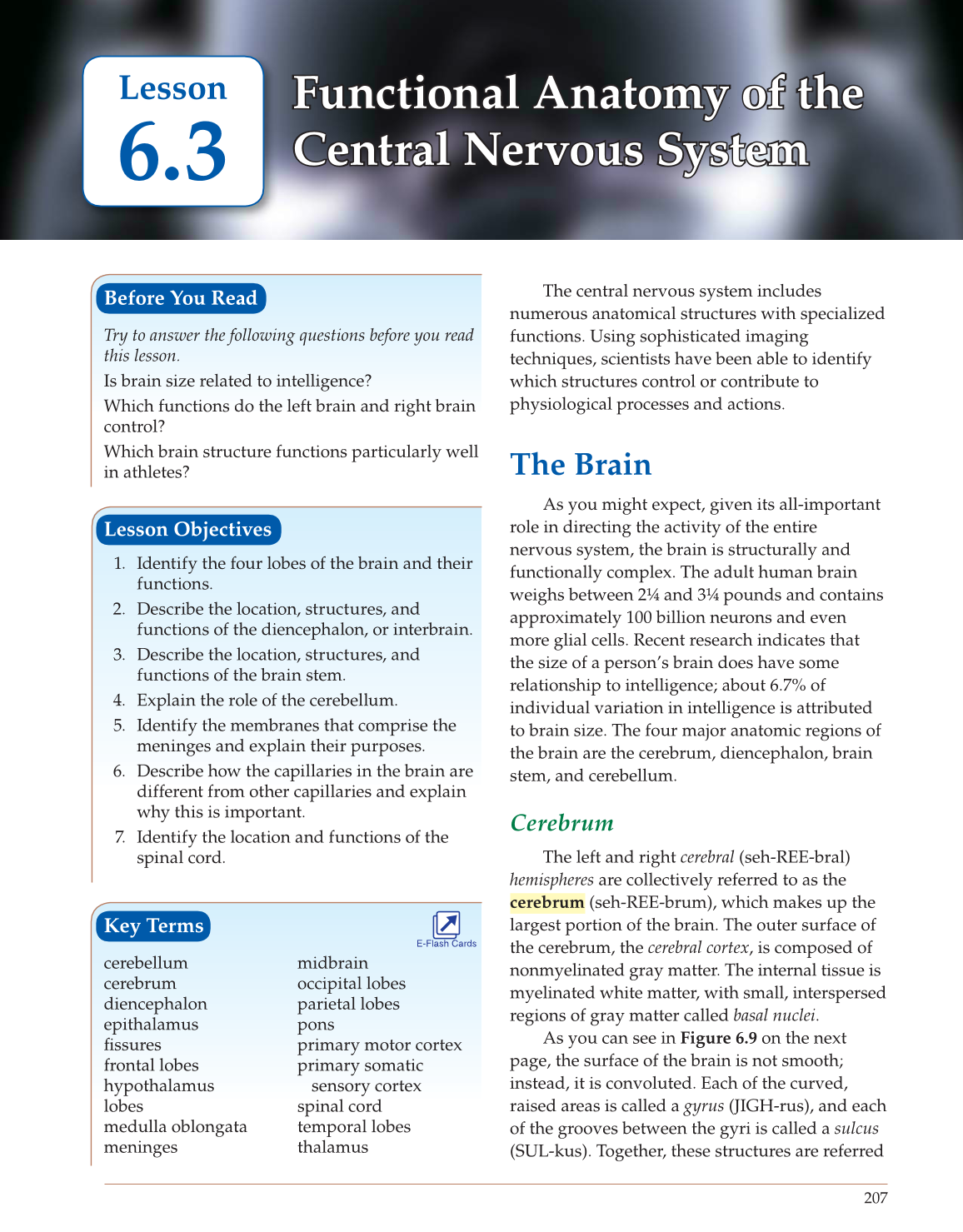207
Lesson
The central nervous system includes
numerous anatomical structures with specialized
functions. Using sophisticated imaging
techniques, scientists have been able to identify
which structures control or contribute to
physiological processes and actions.
The Brain
As you might expect, given its all-important
role in directing the activity of the entire
nervous system, the brain is structurally and
functionally complex. The adult human brain
weighs between 2¼ and 3¼ pounds and contains
approximately 100 billion neurons and even
more glial cells. Recent research indicates that
the size of a person’s brain does have some
relationship to intelligence; about 6.7% of
individual variation in intelligence is attributed
to brain size. The four major anatomic regions of
the brain are the cerebrum, diencephalon, brain
stem, and cerebellum.
Cerebrum
The left and right cerebral (seh-REE-bral)
hemispheres are collectively referred to as the
cerebrum (seh-REE-brum), which makes up the
largest portion of the brain. The outer surface of
the cerebrum, the cerebral cortex, is composed of
nonmyelinated gray matter. The internal tissue is
myelinated white matter, with small, interspersed
regions of gray matter called basal nuclei.
As you can see in Figure 6.9 on the next
page, the surface of the brain is not smooth;
instead, it is convoluted. Each of the curved,
raised areas is called a gyrus (JIGH-rus), and each
of the grooves between the gyri is called a sulcus
(SUL-kus). Together, these structures are referred
6.3
Functional Anatomy of the Functional Anatomy of the
Central Nervous System Central Nervous System
Before You Read
Try to answer the following questions before you read
this lesson.
Is brain size related to intelligence?
Which functions do the left brain and right brain
control?
Which brain structure functions particularly well
in athletes?
Lesson Objectives
1. Identify the four lobes of the brain and their
functions.
2. Describe the location, structures, and
functions of the diencephalon, or interbrain.
3. Describe the location, structures, and
functions of the brain stem.
4. Explain the role of the cerebellum.
5. Identify the membranes that comprise the
meninges and explain their purposes.
6. Describe how the capillaries in the brain are
different from other capillaries and explain
why this is important.
7. Identify the location and functions of the
spinal cord.
Key Terms
cerebellum
cerebrum
diencephalon
epithalamus
fi ssures
frontal lobes
hypothalamus
lobes
medulla oblongata
meninges
midbrain
occipital lobes
parietal lobes
pons
primary motor cortex
primary somatic
sensory cortex
spinal cord
temporal lobes
thalamus
E-Flash Cards
